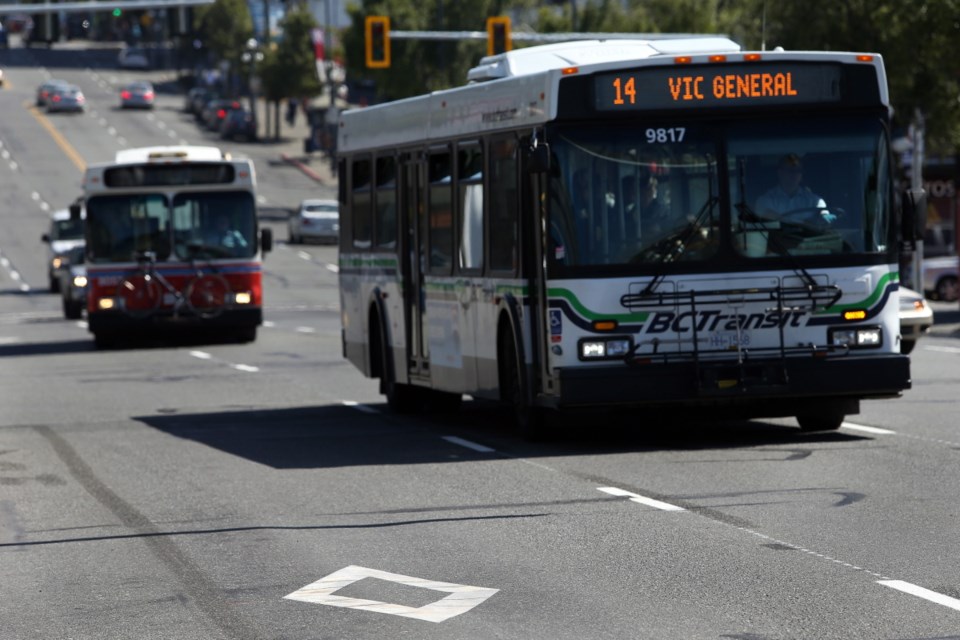More people are getting around Greater Victoria by bus.
B.C. Transit’s annual report for 2013-14, released Wednesday, shows a 5.5 per cent increase in ridership in Greater Victoria and a 2.7 average increase in the B.C. communities it services.
“I think it’s tremendously exciting,” said B.C. Transit spokeswoman Meribeth Burton.
The increase follows last year’s labour dispute between the bus drivers’ union and B.C. Transit, which brought about a two to three per cent drop in riders.
“I think this shows our customers have come back, and they’ve come back in stronger numbers,” Burton said.
B.C. Transit also conducted a public consultation last fall, asking riders how to improve service. In response, the corporation expanded its service to the University of Victoria and pushed for bus-only lanes on Douglas Street during rush hour.
The bus is now a first choice for transportation for many people in Victoria, Burton said.
B.C. Transit also added 5,000 service hours, which helped elevate the passenger numbers. The future also looks bright, Burton said. In September, service hours will be added which in part will help boost service to Camosun College’s Interurban campus, where students have been left at bus stops by buses filled to capacity.
Operating costs dropped 3.8 per cent ($8.7 million) below budget due to operational efficiencies, the report said.
Ken Kelly of the Downtown Victoria Business Association said B.C. Transit serves the downtown very well.
“I find the bus very convenient coming from our house into the downtown,” said Kelly, who uses transit, car pooling or cycling to get to work.
B.C. Transit has made a number of changes to make buses an easy choice for many, he said.
“Certainly the efforts that have been made by B.C. Transit in partnership with the city to increase the efficiency is very important,” he said.
He urges B.C. Transit and the province to work together to speed up service by extending express lanes, which can allow buses to move more quickly during morning and afternoon commutes.
He suggests a widened lane that would allow B.C. Transit to run express buses would draw more single-car-occupancy drivers off the road.
Ridership in the Cowichan Valley rose by 7.3 per cent over last year. The Cowichan Valley Commuter service, which connects Victoria with Duncan, is seeing continued growth and success, said Cowichan Valley Regional District board chairman Rob Hutchins.
“The [Victoria Regional Transit] Commission is delighted to see a growing number of people are finding B.C. Transit is the most efficient and effective way to commute over the Malahat to B.C.’s capital,” said chairwoman Susan Brice.
Ben Williams, president of Unifor 333, which represents B.C. Transit operators, did not return calls Wednesday.



